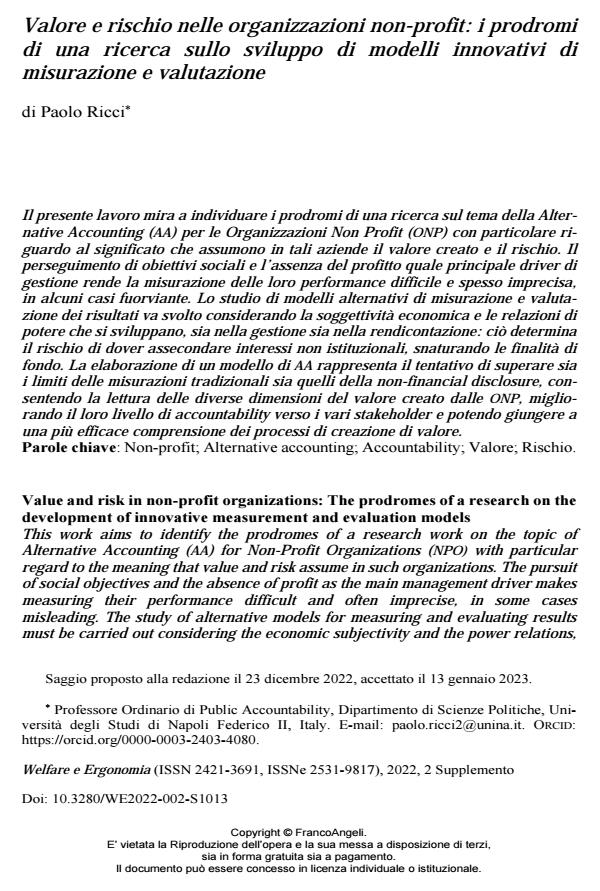Valore e rischio nelle organizzazioni non-profit: i prodromi di una ricerca sullo sviluppo di modelli innovativi di misurazione e valutazione
Titolo Rivista WELFARE E ERGONOMIA
Autori/Curatori Paolo Ricci
Anno di pubblicazione 2023 Fascicolo 2022/2 Suppl.
Lingua Italiano Numero pagine 15 P. 133-147 Dimensione file 399 KB
DOI 10.3280/WE2022-002-S1013
Il DOI è il codice a barre della proprietà intellettuale: per saperne di più
clicca qui
Qui sotto puoi vedere in anteprima la prima pagina di questo articolo.
Se questo articolo ti interessa, lo puoi acquistare (e scaricare in formato pdf) seguendo le facili indicazioni per acquistare il download credit. Acquista Download Credits per scaricare questo Articolo in formato PDF

FrancoAngeli è membro della Publishers International Linking Association, Inc (PILA)associazione indipendente e non profit per facilitare (attraverso i servizi tecnologici implementati da CrossRef.org) l’accesso degli studiosi ai contenuti digitali nelle pubblicazioni professionali e scientifiche
Il presente lavoro mira a individuare i prodromi di una ricerca sul tema della Al-ternative Accounting (AA) per le Organizzazioni Non Profit (ONP) con particolare riguardo al significato che assumono in tali aziende il valore creato e il rischio. Il perseguimento di obiettivi sociali e l’assenza del profitto quale principale driver di gestione rende la misurazione delle loro performance difficile e spesso imprecisa, in alcuni casi fuorviante. Lo studio di modelli alternativi di misurazione e valutazione dei risultati va svolto considerando la soggettività economica e le relazioni di potere che si sviluppano, sia nella gestione sia nella rendicontazione: ciò determina il rischio di dover assecondare interessi non istituzionali, sna-turando le finalità di fondo. La elaborazione di un modello di AA rappresenta il tentativo di superare sia i limiti delle misurazioni tradizionali sia quelli della non-financial disclosure, consentendo la lettura delle diverse dimensioni del valore creato dalle ONP, migliorando il loro livello di accountability verso i vari stakeholder e potendo giungere a una più efficace comprensione dei processi di creazione di valore.
Parole chiave:Non-profit; Alternative accounting; Accountability; Valore; Ri-schio.
Paolo Ricci, Valore e rischio nelle organizzazioni non-profit: i prodromi di una ricerca sullo sviluppo di modelli innovativi di misurazione e valutazione in "WELFARE E ERGONOMIA" 2 Suppl./2022, pp 133-147, DOI: 10.3280/WE2022-002-S1013